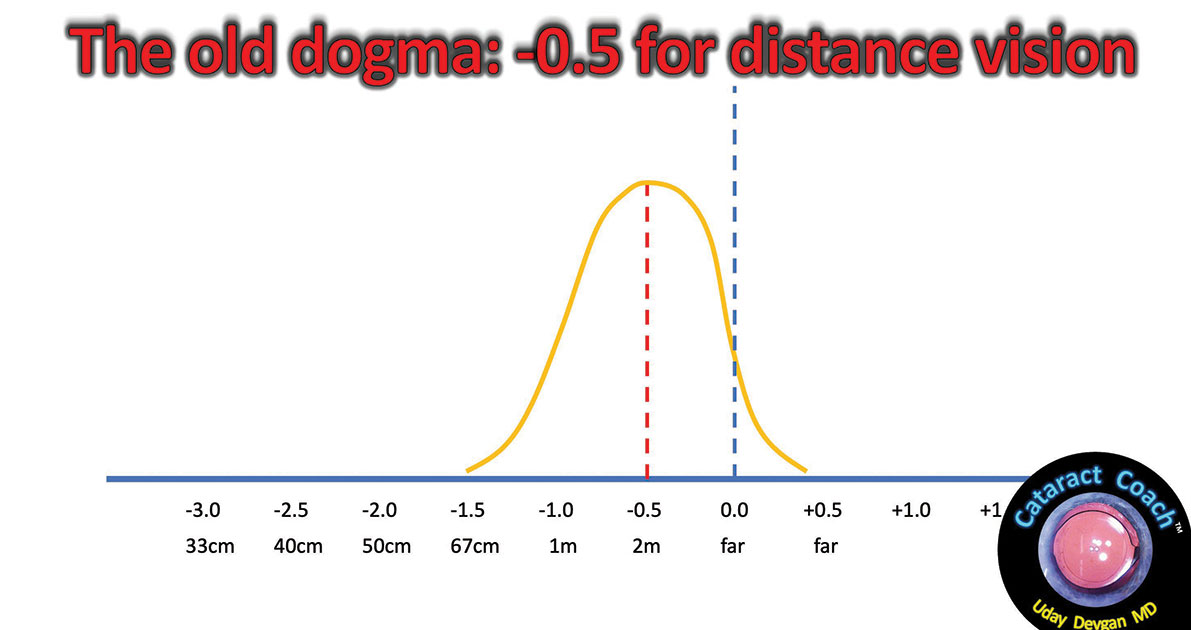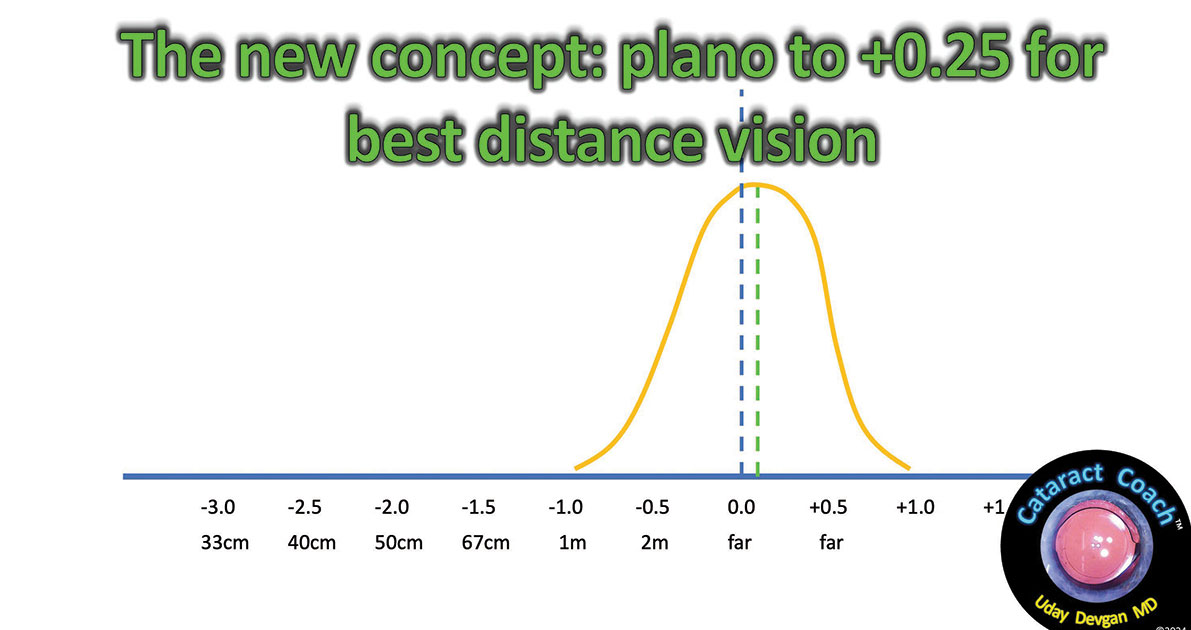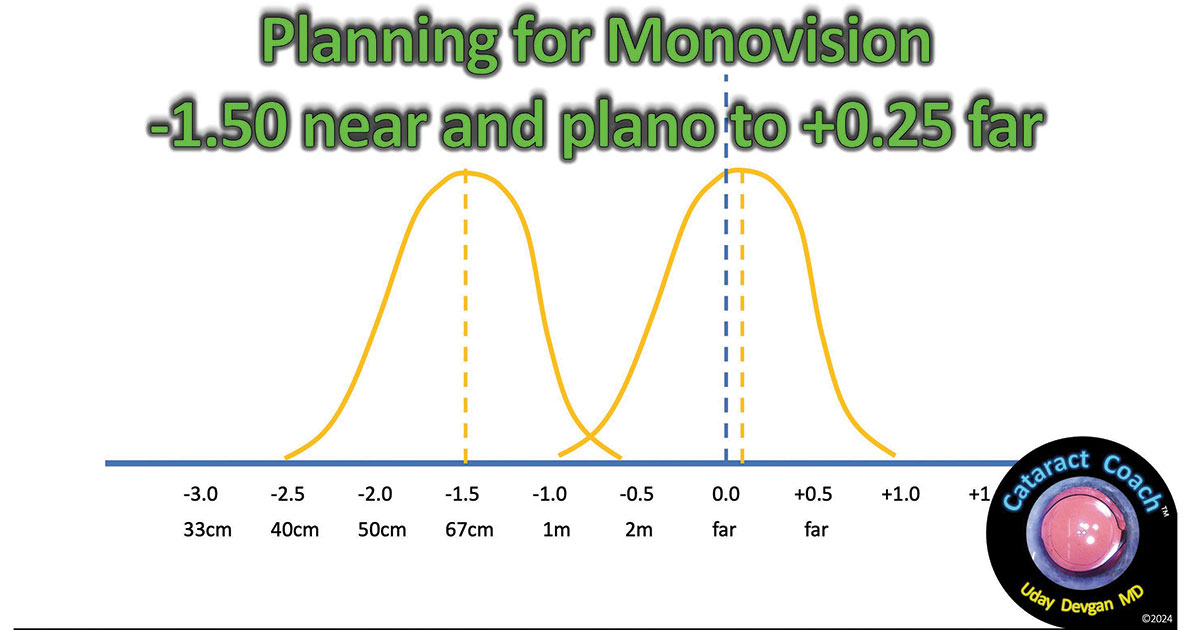It is time to rethink cataract surgery refractive targets
As a resident more than 2 decades ago, I was taught by my attendings that the best refractive target for most patients was –0.5 D in order to achieve good uncorrected distance vision.

This made sense at the time because our IOL calculations were limited by the accuracy of third-generation formulas, which determined IOL power by estimating effective lens position solely based on the keratometry and axial length. In those days, it was also unusual to be concerned with corneal astigmatism because that could be addressed with spectacles after healing from surgery was complete.
Times have changed dramatically, and we are now able to deliver more accurate refractive outcomes to our patients, and almost all IOL designs are available in toric versions to address corneal astigmatism. While a distance target of –0.5 D seems to be reasonable, it actually is a focal point of 2 m instead of true far distance vision, which is considered to be at least 6 m away (Figure 1). On a recent CataractCoach podcast, I spoke with Steve Schallhorn, MD, who has studied large refractive surgery data sets in detail and come up with some surprising insights.

For those desiring best distance vision, the patients who were –0.5 D were twice as unhappy with the outcomes as the patients who were +0.5 D, which overshoots the ultimate goal of perfect plano or zero. This goes contrary to the teaching that we should leave patients with a small degree of residual myopia. Furthermore, if the patients are judging their distance vision by targets that are farther away than the Snellen charts in our clinic, which are at 20 feet or 6 m, our patients who have far distance needs, such 50 m to 100 m, for driving or playing golf will likely appreciate being +0.25 D instead of –0.5 D. Larger pupil size and night vision also play a role because there can be a slight myopic shift in the refraction with larger pupils in scotopic conditions.

The distance vision would be optimized by selecting the IOL power that gives the option closest to perfect plano (0 D) even if that means overshooting to slight hyperopia such as +0.25 D, which is contrary to the dogma of choosing –0.5 D instead (Figure 2). With IOL powers typically coming in 0.5 D steps, most patients will have an IOL power such as +21 D, which gives a postop target of –0.22 D, while the +20.5 D IOL would give a postop refraction of +0.12 D. In this case, we would choose the +20.5 D IOL if the patient truly wanted best possible far distance vision.

Source: Uday Devgan, MD
For monovision, in which we choose a near refractive target for one eye and a far refractive target for the other, it is even more important to achieve sharp distance vision because we do not have the benefit of binocular summation. With both eyes slightly undercorrected to 20/25 vision due to residual myopia, binocular summation means that using the eyes together, the patient would likely be able to see a bit better, such as 20/20. With monovision, we no longer have that benefit for best distance vision, so it becomes more important to hit the goal of plano to +0.25 D for far vision. For the near vision eye, there is a delicate balance of providing a close enough focal point without causing too much anisometropia. In our podcast discussions, Dr. Schallhorn found the most success with a target of about –1.5 D, which is centered around a 67 cm near point with range on either side of that as well (Figure 3).
When using IOLs that have a wider focal range compared with monofocal IOLs, we can sometimes do less anisometropia. Extended depth of focus IOLs make an optical tradeoff to increase the range of focus. With these IOLs, we can have more leeway in the distance target and still achieve sharp far vision, while the near eye can have less residual myopia to provide a similar range of near vision.
We should think about what specific refractive targets would be best for each case and then target our results to make our patients happy with their new vision.
A video of the aforementioned podcast can be viewed at https://cataractcoach.com/category/podcast/.
- For more information:
- Uday Devgan, MD, in private practice at Devgan Eye Surgery and a partner at Specialty Surgical Center in Beverly Hills, California, can be reached at devgan@gmail.com; website: www.CataractCoach.com.








